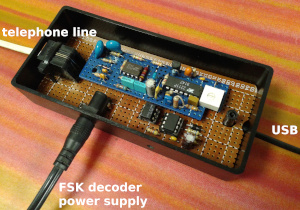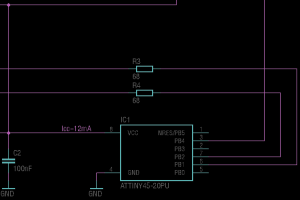You may ask yourself how your fixed telephone is able to show the number of the person who's calling you.
After all, the connection is 100% analog. Well, the exchange sends this so called Caller Line Identification (CLID)
in a 1200 baud message using two tones, 1300 Hz (logic 1) and 2100 Hz (logic 0), just after the first ring tone.
More details can be found in
this document
from the EXAR website.
I thought it was useful to have my received (and missed) calls available online so I built an FSK decoder
and hooked it up to a USB port of a router running OpenWrt firmware using a microcontroller. The
FSK decoder
is built around a PLL
XR-2211 modem chip.
Its output is connected to the microcontroller through an optocoupler. Both sit on the
main board
together with the FSK decoder.

